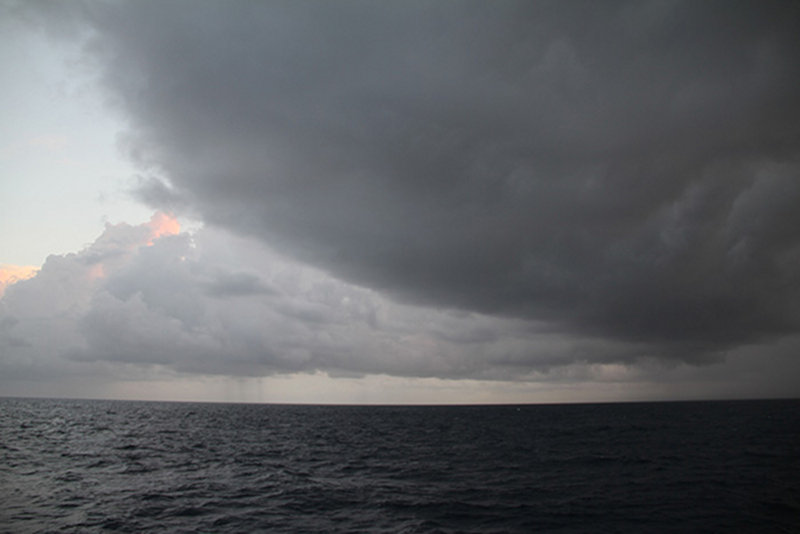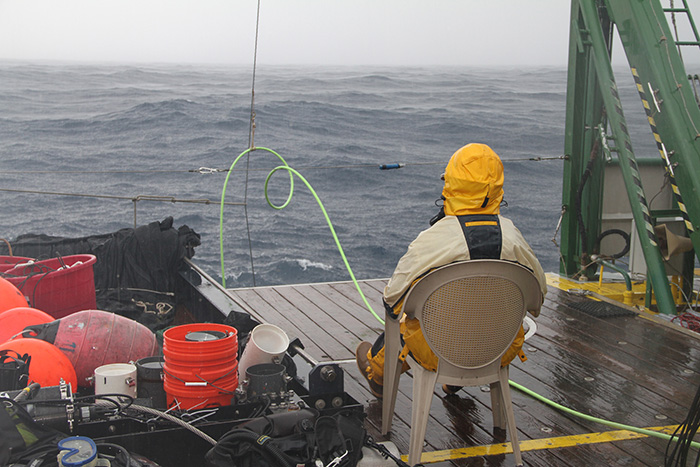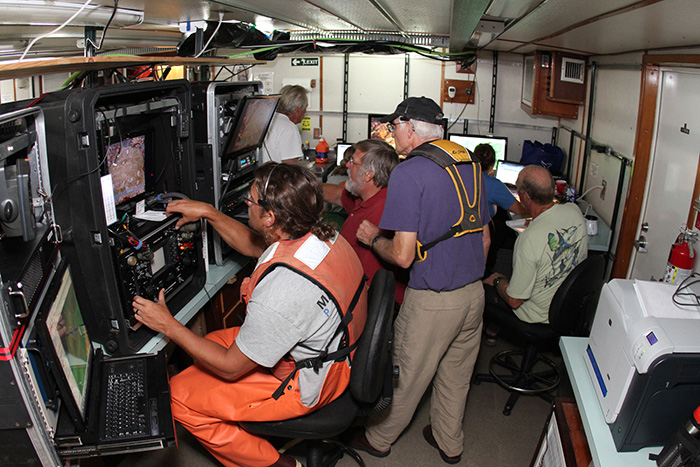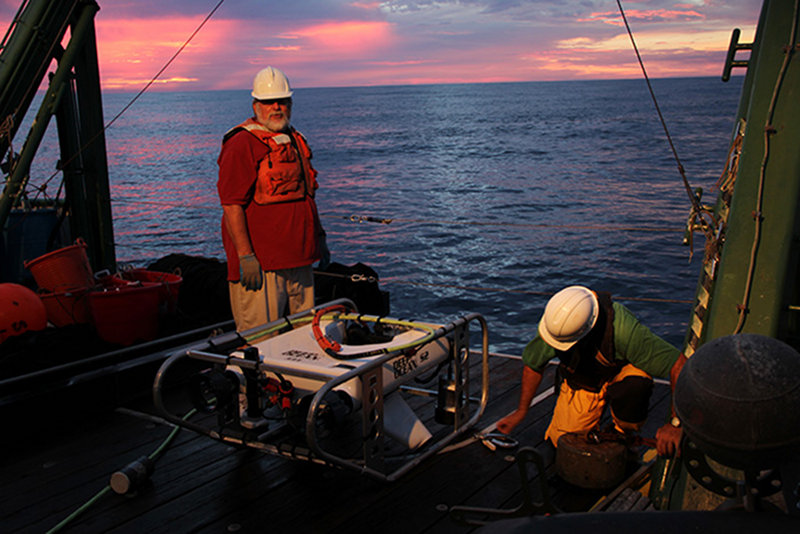
By Brian Cousin, FAU Harbor Branch
August 19, 2013

During a period of relative calm, ROV pilot Lance Horn and pilot trainee Jason White recover the SuperPhantom ROV to the deck of the R/V F.G. Walton Smith. Image courtesy of Brian Cousin, FAU Harbor Branch. Download larger version (jpg, 737 KB).
Yesterday, the start of our daily operations coincided with the first of several gnarly squalls to pass through our area. Undeterred, the team accomplished the usual day’s objectives, even when it seemed that each patch of bad weather chose to bluster through at the same time we set about performing tasks most dependent on better weather.

The first of several squall lines approaches the R/V F. G. Walton Smith not long after sunrise, as daily ops are about to commence. Image courtesy of Brian Cousin, FAU Harbor Branch. Download larger version (jpg, 284 K B).
More than once, lightning chased us away from recovering the chevron fish traps. At a casual glance, the trap recovery system resembles a lightning rod and collector enough to warrant standing well clear during an electrical storm.

ROV pilot Lance Horn keeps a lonely vigil on the aft deck of the ship as the undersea vehicle surveys the bottom. Two ROV pilots and a pilot trainee share vehicle operations duties that include launch, recovery and tether management on the deck, and piloting the ROV from the inside lab. Image courtesy of Brian Cousin, FAU Harbor Branch. Download larger version (jpg, 662 KB).
Once the traps were secured on the deck, the choppy sea conditions, rain and often gusty winds were deemed to be acceptable for launching the Remotely Operated Vehicle (ROV). At least by Glenn Taylor’s estimation, because it was his turn to stay inside and pilot the vehicle while Lance Horn stayed out on the weather deck to tend to the tether that connects the vehicle to the ship. As the newest member of the ROV team, Jason White had no say in the matter and remained in his foul weather gear, safety vest and hardhat all day long, inside and out.

ROV crew, biologists and technicians fly the vehicle, monitor video, take still images and record species and habitat observations from the shipboard lab. Image courtesy of Brian Cousin, FAU Harbor Branch. Download larger version (jpg, 771 KB).
By sunset, we were treated to a rich red sky and placid sea surface that boded well for the MOCNESS plankton net tow and drifter deployment scheduled for after dark.

The end of the days ROV operations were marked by a deep red sunset and calm sea. Chief scientist Dennis Hanisak stands watch while pilot trainee Jason White performs post-dive checks on the vehicle. Image courtesy of Brian Cousin, FAU Harbor Branch. Download larger version (jpg, 581 KB).
All in all, the science and technical crews maintained high spirits through the minor inconveniences posed by wind, rain and waterspouts. Cameras on the ROV captured video and still images of the seafloor. Fish traps and plankton nets collect living specimens for study. Drifters report current data from beneath the surface via satellite. All support the mission’s goal of characterizing the biological and physical characteristics of Pulley Ridge to help further illuminate the connectedness between the ridge and the reefs of the Florida Keys, and the biological processes that take place therein.
Even when the weather outside is frightful it can still be a good day at sea.